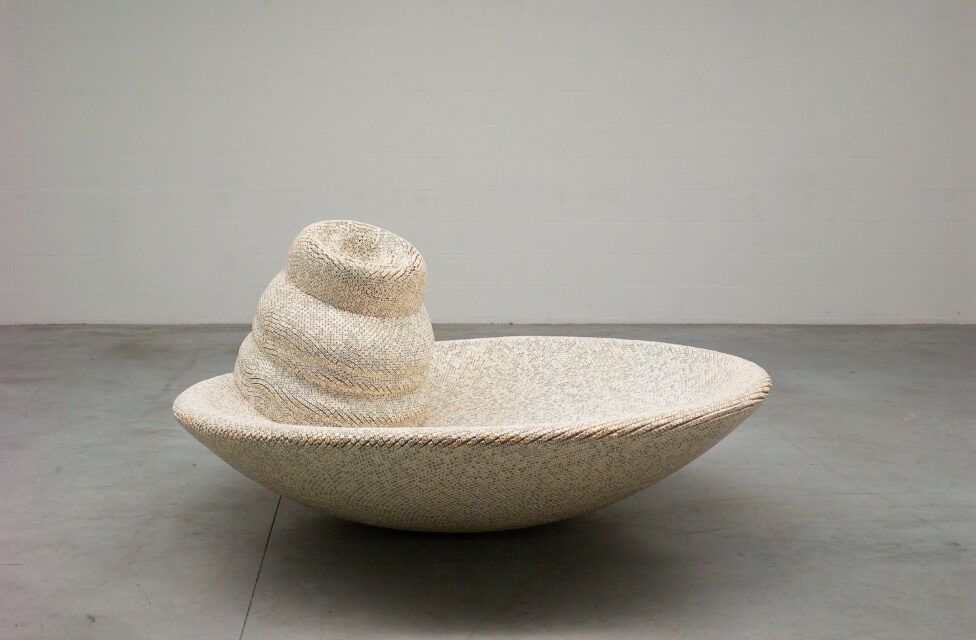Secretions
Details
With a signed photo certificate by the artist dated 2008. Exhibitions: Tony Cragg, Atelier: Wuppertal, Plastiken und Zeichnungen der 90er Jahre, Von der Heydt-Museum, Wuppertal 1999, with col. illus. p. 33;A New Thing Breathing: Recent Work by Tony Cragg, Tate Gallery, Liverpool 2000, with col. illus. p. 78;Anthony Cragg – Skulpturen, KunstCollection ofen Chemnitz, 2001, with col. illus. p. 65. Provenance: Konrad Fischer Galerie, Düsseldorf; private collection, Belgium.
Description
• Unique work with spectacular material aesthetic
• Characteristic early piece assembled from hundreds of gaming dice
• In private ownership for over 20 years, appearing on the international auction market for the first time
• Cragg is one of the most innovative and versatile sculptors of the international contemporary art scene. The Munich Pinakothek der Moderne showed comparable early pieces in the exhibition “Cragg” at the beginning of this year. “…the main act is the reorganisation (sometimes only proposed) of material into images and forms, which offer themselves as complex symbols for new experiences, insights and freedoms.” It is not often that you come across art that is not only indescribable, but literally unimaginable. The sculpture “Secretions” is one such work. It is part of a series of eponymous works created by British artist Tony Cragg from 1995 onwards. Hundreds of dice form the skin for an amorphous shape that cannot be related to anything tangible. Rather, it is a brilliant illustration of Cragg’s ability to transform found materials and combine them into something new and impressive. Individual dice are often misplaced, rolling under sofas or lost behind radiators. They are not objects that we normally pay much attention to. Here, the sheer number that Cragg places before us in a large-scale form lends them a new expressive power. The sinuous curves of the work and the reflection of light on its surface lend “Secretions” an overwhelming tactile quality and aesthetic. The shiny surface interspersed with black dots lends the sculpture an enigmatic aura. As a sign of chance and gambling, the dice’s association brings us back to the fundamental premise of Cragg’s work: the process of random selection, which can also be understood as an oblique reference to DNA coding and evolution. Cragg is always concerned with man’s relationship to the material world. For him, natural science is the basis and foundation of his artistic work. Sculpture and science are equally instruments for understanding the physical and metaphysical world. The principle of accumulation has been the essential working method in Cragg’s work from the very beginning. The now 74-year-old artist became famous in the early 1980s as part of the New British Sculpture movement alongside Anish Kapoor and Antony Gormley. He has become one of the most innovative and versatile sculptors in international contemporary art by sorting things. Instead of developing new forms from scratch, Cragg arranged remnants from his studio into monolithic stacks or collected plastic waste into colour-coded assemblages. Several of his sculptures consist of objects that he collected himself, for example plastic objects that washed up on the Rhine and that he began collecting after moving to Wuppertal in 1977.
* All results incl. buyer’s premium (27%) without VAT. No guarantee, subject to error.
** All post-auction prices excl. buyer's premium and VAT. No guarantee, subject to error.
*** Conditional Sale: The bid was accepted below the limit. Acquisition of the work may still be possible in our post-auction sale.
R = regular taxation
N = differential taxation on works of art which originate from a country outside of the EU
The private or commercial use of images shown on this Website, in particular through duplication or dissemination, is not permitted. All rights reserved.


